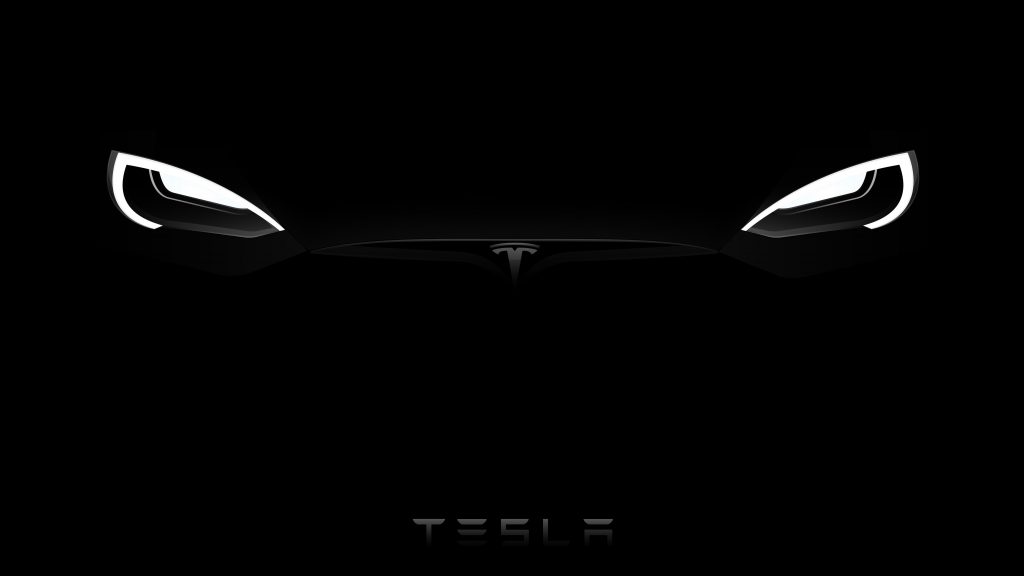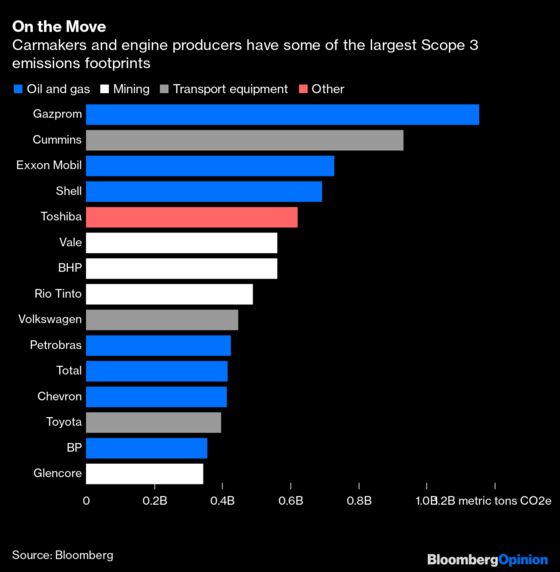Elon Musk should come clean: Tesla’s emissions are rising

At a time when most major companies are working on plans to cut their carbon emissions, one of the darlings of green investing is working to increase its emissions footprint.
You read that right. Thanks to its explosive expansion in China and a planned car plant in India, Tesla Inc. is in the process of not just increasing the total sum of its emissions — a pretty inevitable consequence of growth in our current carbonized world — but increasing the amount of pollution each of its vehicles generates, too.
That’s because carmakers’ emissions aren’t just a product of the energy consumed in their factories — they’re a result of the pollution their products pump out while they’re being driven around. Thanks to all the gasoline and diesel that gets burned over the lifetime of the cars they sell, Volkswagen AG is responsible for more greenhouse gases than oil producer Total SE. Toyota Motor Corp.’s footprint exceeds that of BP Plc . Cummins Inc., which makes engines for commercial vehicles, has a higher total than Exxon Mobil Corp.

Electric vehicles like those sold by Tesla are at a substantial advantage on that front. As my colleagues Liam Denning and Elaine He have written, they’re so much more efficient in converting produced energy into vehicle power that even in coal-heavy grids like China’s they’re more efficient than the gasoline equivalent.
The differences from one country to another, however, are substantial.
Take the lifecycle emissions calculator produced by Transport & Environment, a European non-profit dedicated to zero-carbon transport. A current-model large car with a battery produced and charged in an average European Union country emits about 88 grams of CO2 per kilometer, compared to 284 grams for a petrol-powered equivalent. In a country with a low-carbon grid like Sweden or France, that drops to 50 grams or less.

If you use a proxy for a high-emissions grid like those in China or India, though, the picture changes substantially. A car with its battery made in China and charged up in Poland, where coal makes up about two-thirds of the electricity mix as it does in China and India, puts out 193 grams per kilometer.
An essential element of the climate potential of electric vehicles is that they’re able to switch to lower-carbon fuels over the course of their lifetimes, as heavily-emitting power plants are disconnected from the grid and replaced with renewables. That process is likely to be quite rapid in developed countries — but in the two countries where Tesla hopes to catch the next leg of growth, China and India, it’s going to be unusually slow.

As a result, the more cars Tesla sells in China and India, the more the intensity of its emissions — the emissions per vehicle sold, or per dollar of revenue — will rise.
Perhaps this doesn’t matter. Any electric vehicle sold anywhere in the world is likely substituting for one powered by petrol or diesel. What the climate needs is for the market share of battery-powered vehicles to increase vis-a-vis conventional ones.
If that means a lot get sold in markets where the immediate greenhouse benefits are lesser than they are in the US and Western Europe, it’s still, on balance, a plus.
Even so, this is the sort of information the climate-focused investors who’ve driven Tesla’s stock price so high ought to be given, so they can make their own decisions about how their shareholdings reflect their own emissions-reduction commitments.

That’s not the case at Tesla. Not only does it not disclose the Scope 3 emissions (those dominated by emissions from the cars it sells), it doesn’t even lay out Scope 1 (from on-site power consumption) or Scope 2 (from purchased electricity).
Nor does it disclose its electricity consumption, and its behavior indicates that, for all the rhetoric, this isn’t exactly a priority. Four years after production started at its Gigafactory battery plant in Nevada, the solar panels that were to cover its roof and help make it independent of Nevada’s gas-fired grid are still only gradually being added.
Companies that make products to accelerate the transition to clean energy while providing scrappy documentation of their own carbon footprint may be better than the alternative — ones that provide exemplary historic disclosures but only the vaguest assurances about how their net-zero commitments are going to be met.
Still, a clean-energy business with a market cap roughly equivalent to the S&P 500’s entire oil and gas sub-index should be capable of producing the information to help investors make their own minds up. Tesla’s slapdash emissions disclosure is a stain on an otherwise impressive record. A company that thrives on the power of the sun shouldn’t hide the footprint of its own operations in shadow.
Although BP’s disclosed emissions are lower than they probably should be, as we’ve written.
(The opinions expressed here are those of the author, David Fickling, a columnist for Bloomberg.)
{{ commodity.name }}
{{ post.title }}
{{ post.date }}

3 Comments
Jonas Barbarossa
This is (probably) the stupidest argument I have ever read…and imagine “calling Elon Musk out”.
Let’s be clear: never in the history of mankind has one person done so much for so many to REDUCE GLOBAL POLLUTION.
And so, Mr. Fickling, start up your V8 (which is apparently emission free) , get outa here and leave us alone.
Cunt
Yeah, i dont know what was it all about, trying to pin elon with carbon like dor real thats stupid crap. Whoever wrote this article look for content
Lachlan
I would be interested to see a comparison on how MiC Tesla’s run off of the Chinese grid compare to the average gasoline/diesel car in China